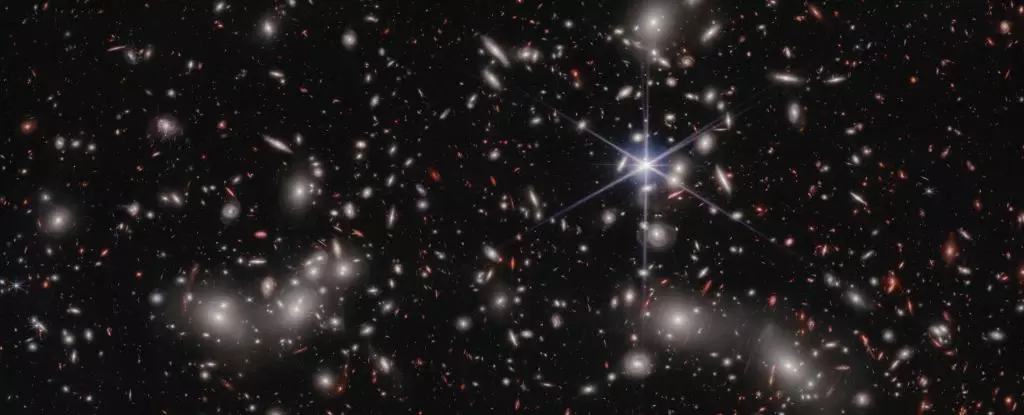In the infancy of the Universe, a time traditionally referred to as the cosmic dawn, the cosmos was shrouded in darkness. Enveloped in a hot and dense fog of ionized plasma, only a handful of photons ventured through this primordial environment. This lack of light creates a significant challenge for astronomers seeking to piece together the complex puzzle of cosmic evolution. Fortunately, recent advancements in observational technology, notably the data gleaned from the Hubble and James Webb Space Telescopes, have provided a new vantage point from which to explore this enigmatic era. These observatories have shed light on the critical contributions of ultra-faint dwarf galaxies, offering fresh insights into their pivotal roles in the reionization of the Universe.
To appreciate the significance of dwarf galaxies in this context, one must first understand the process of cosmic reionization. Following the Big Bang, the Universe experienced a cooling phase that lasted approximately 300,000 years. During this time, protons and electrons coalesced to form neutral hydrogen and helium gas. While certain wavelengths of light could penetrate this neutral gas, the scarcity of light-producing sources meant that signatures of brightness were few and far between.
However, the formation of the first generation of stars dramatically changed the landscape. These early stars generated an intense radiation capable of stripping away electrons from hydrogen atoms, thus reionizing the gas. This process marked a turning point, allowing photons to traverse the Universe unobstructed. By approximately one billion years post-Big Bang, the Universe had transitioned from a dark realm into a luminous one, characterized by a diverse array of cosmic structures.
Historically, researchers assumed that powerful cosmic phenomena, such as supermassive black holes or large, star-forming galaxies, were the predominant forces driving reionization. Yet, the latest findings, spearheaded by astrophysicist Hakim Atek and his team, have illuminated the remarkable role of dwarf galaxies as the chief architects of this transformative process. Their research centered around a galaxy cluster known as Abell 2744, which acts as a cosmic lens, bending and magnifying light from distant galaxies.
The observational capabilities of the James Webb Space Telescope allowed scientists to scrutinize this lens, revealing an abundance of faint dwarf galaxies previously hidden in the cosmos. Astonishingly, the data indicated that these dwarf galaxies not only outnumbered larger galaxies by a staggering ratio of 100 to 1 but also emitted up to four times the ionizing radiation presumed to emerge from larger galaxies. “These findings suggest that dwarf galaxies, despite their small stature, are monumental powerhouses in terms of energetic output,” Atek observed.
The implications of these discoveries are profound. By demonstrating that dwarf galaxies can collectively emit a significant amount of reionizing radiation, this research suggests that they played an integral role in shaping the cosmic landscape we observe today. Their abundance and energetic output may have been sufficient to transition the Universe from a neutral state to one filled with light, combustion leading to the formation of more complex structures.
The excitement surrounding this assertion is palpable among astrophysicists, as they recognize the potential for a major paradigm shift in our understanding of cosmic evolution. As the researchers emphasize, it is crucial to validate that their findings aren’t confined to an anomalous region. Future studies are planned to survey additional cosmic lens regions, broadening their analysis of early galactic populations.
With the Hubble and James Webb Space Telescopes offering unprecedented insights, our understanding of the Universe’s infancy is poised for continued expansion. “We are on the precipice of a significant breakthrough in reionization studies,” remarked astrophysicist Themiya Nanayakkara. The discovery of dwarf galaxies as central players in the reionization process not only enriches our knowledge but also underscores the importance of exploring the lesser-known components of the cosmos.
In this ever-evolving field of astrophysics, it is crucial to maintain an open mind and an insatiable curiosity. As researchers probe deeper into the cosmic dawn, they are bound to uncover even more surprises lurking within the vastness of space. Ultimately, the pursuit of understanding the origins of our Universe continues to inspire and challenge astronomers, nudging humanity ever closer to deciphering the intricate tapestry of existence that began with a singular explosive moment.

